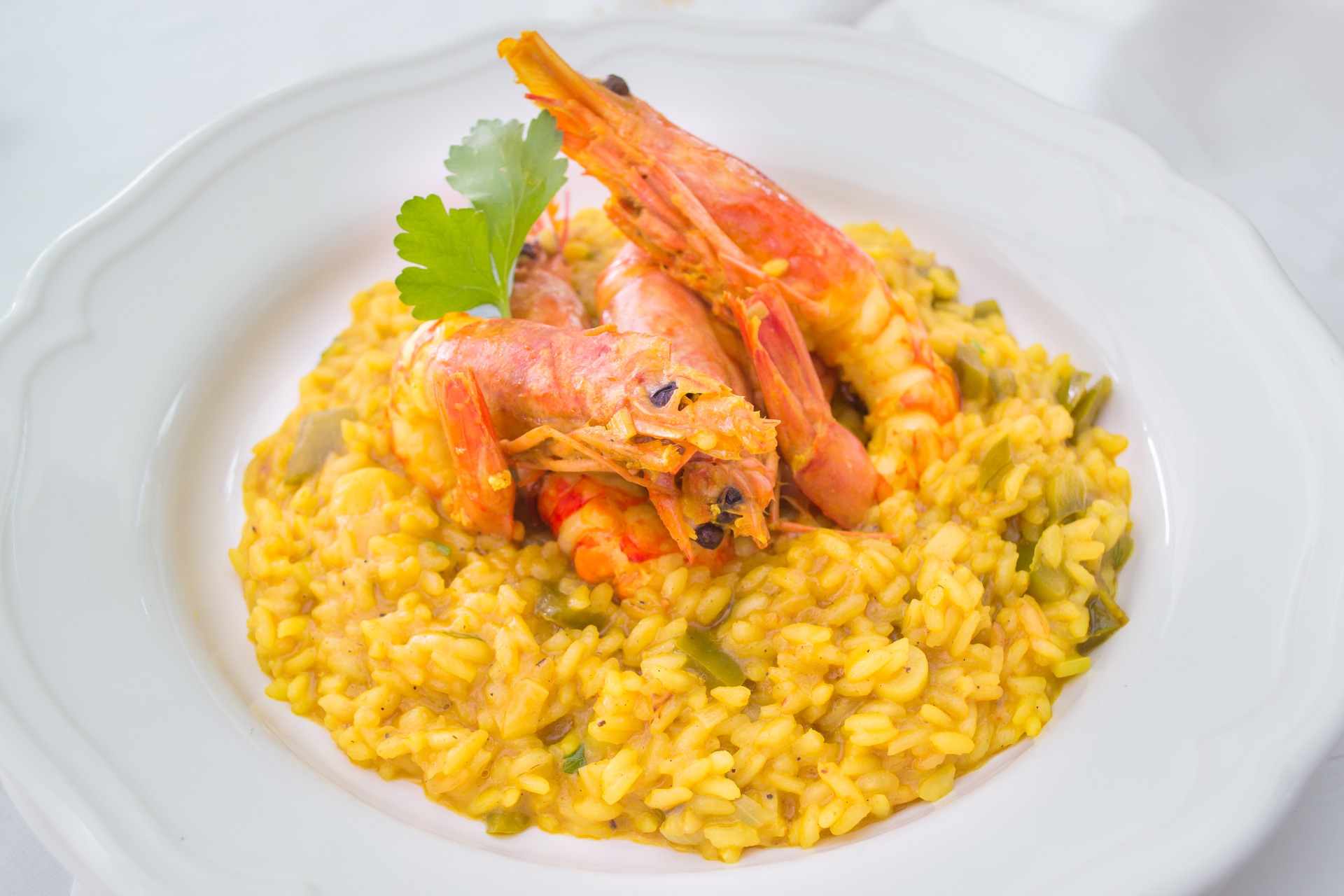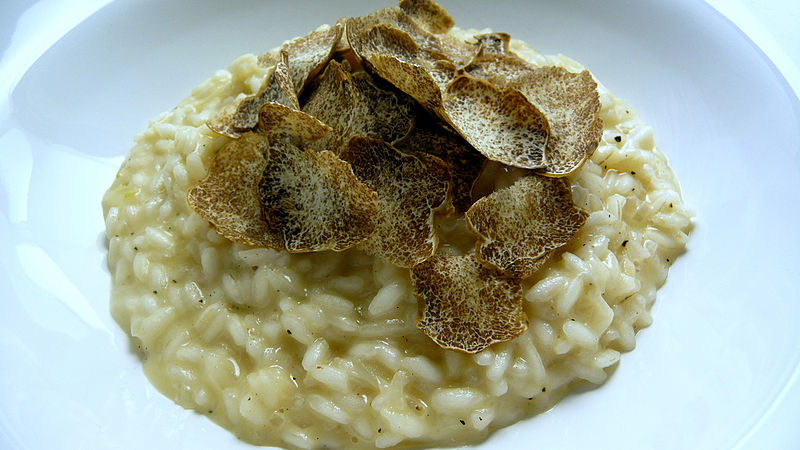It was a cold, winter night in Boulder, Colorado. The roads were icy, the cars snow-covered and the house freezing—regardless of our plug-in electric fireplace. Such a frigid evening would seem daunting to a normal person, but to me, it presented an opportunity, rather, a chance to make my favorite cold-weather meal: risotto.
All right, maybe I had never actually made risotto before, but I had certainly tasted it enough to feel as if I were an expert. Dressed to play the part in my cigarette jeans, striped sweater and black, four-inch heels (I was going for a Brigitte Bardot meets Sophia Loren with Giada’s skills look), I began to dice my onion. Next I carefully measured out three tablespoons of olive oil into the only pot we had. Finally, I precariously peeled and chopped a butternut squash. It was certainly going to be a good night.
Then, all of the sudden, all hell broke loose. My recipe wasn’t specific enough; How much chicken stock should I use and exactly how warm is it supposed to be? Why does it say it takes approximately 20 minutes to make? This is a recipe, isn’t it supposed to be specific?
Ignoring my reservations about the instructions, I soldiered on and eventually achieved a risotto that was passible considering the amount of butter and Parmigiano Reggiano that I added to my concoction. It was the perfect time to get the risotto off the heat and onto the plates. At that exact moment, however, I realized that all of my patrons were missing.
During the stress of cooking, I never even noticed that all of my roommates were running late. Frantically texting their cells, I thought I would be able to teleport them home in time to enjoy my capolavoro, a.k.a. my masterpiece. Alas, my attempt to use science fiction to my advantage was foiled.
Long story short, my roommates showed up 40 minutes later. The risotto was limp and greasy and my attitude towards risotto was severely damaged.
Fast-forward two years and a culinary degree later, and I’ve repaired my complicated relationship with this Italian rice-dish and I’m ready to share my Do’s and Don’ts of Risotto with you.
Stock Quantity
Don’t underestimate how much broth you need. Do follow this ratio: 3 to 1, liquid to rice. But remember, be safe and keep a bit more stock than the ratio calls for. Ex. If you’re making 1 cup of Arborio rice, use ½ cup of wine and keep 4 cups of warm stock.
Heat
Don’t ever use cold stock. Do bring your stock to a boil, then taste to make sure it has a nice flavor and then turn the heat down to low. For visual learns, keep the stock warm but not boiling.
Toast it Good
Don’t start adding stock before sweating your onions and toasting your rice. Do spend about 5 minutes letting your onions become translucent and your rice become toasted.
Bring it to Wine
Don’t begin to add the warm stock to your risotto before adding some wine and letting it completely soak into the rice. Do drink some wine while cooking, but not so much as to mess up your risotto.
Shake it like you mean it
Do agitate the rice while it absorbs stock, this helps the rice grains release their starches. I prefer to shake the pot with one hand and mix the rice with a wooden spoon in the other. Don’t let the rice burn at the bottom of the pan.
The Perfect Finale
Do add a ladle or two of stock and a bit of salt, waiting till the stock is fully absorbed before adding another one, until your rice is al dente, well seasoned and creamy. Don’t let your rice go past al dente and don’t forget to season as you go.
To sum up the whole process, here is some advice from Chef Veronica Lindemann, artist and chef instructor at the International Culinary Center:
“The best way to cook risotto is with love and patience and vigor. The base stock must be flavorful and the acid balance is also important. If you cook it a la minute you need to have a good thirty minutes from pot to plate. You need to work it vigorously with a wooden spoon so the grains dance with each other and rub up together and release their starch evenly. This takes energy. The finish can be tight but I prefer loose and the inner-grain should be al dente but NOT RAW. The best way is to taste all the way through so you can adjust the seasoning and know just when to add the end ingredients”.

